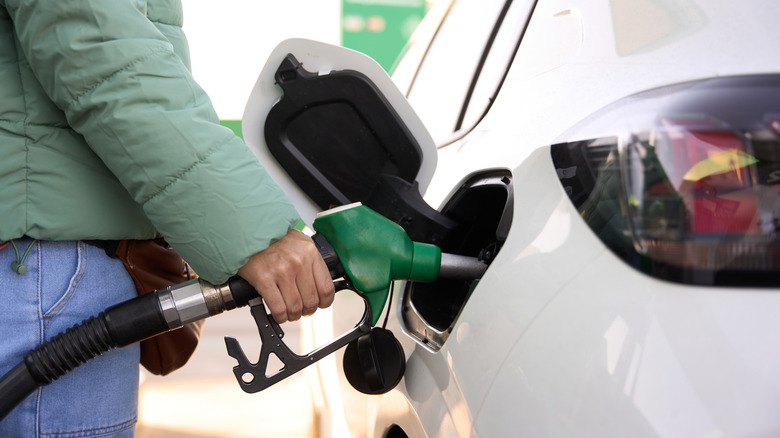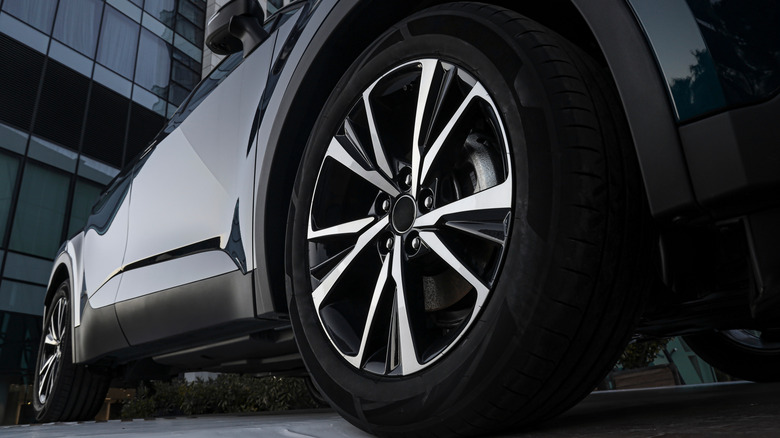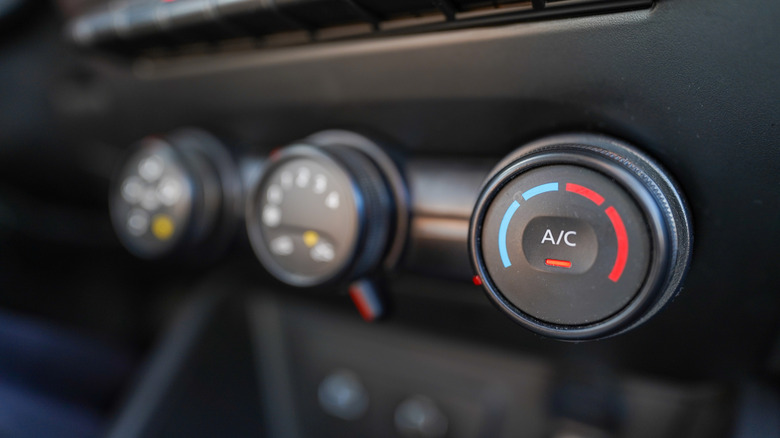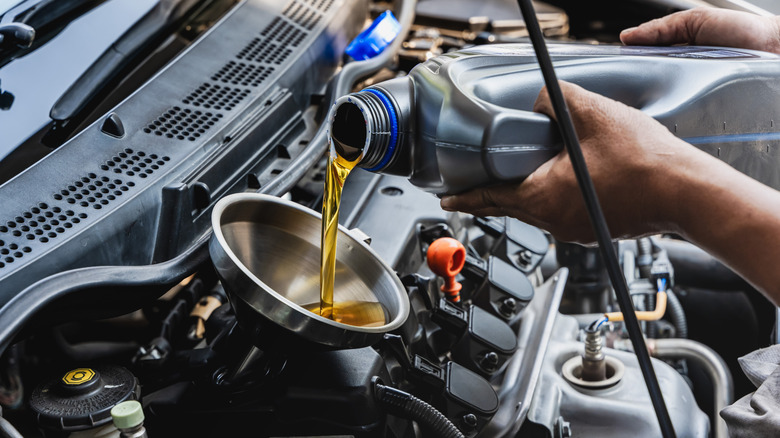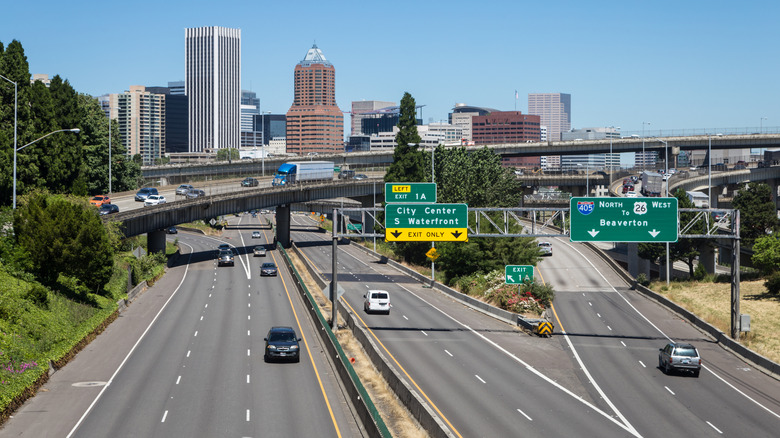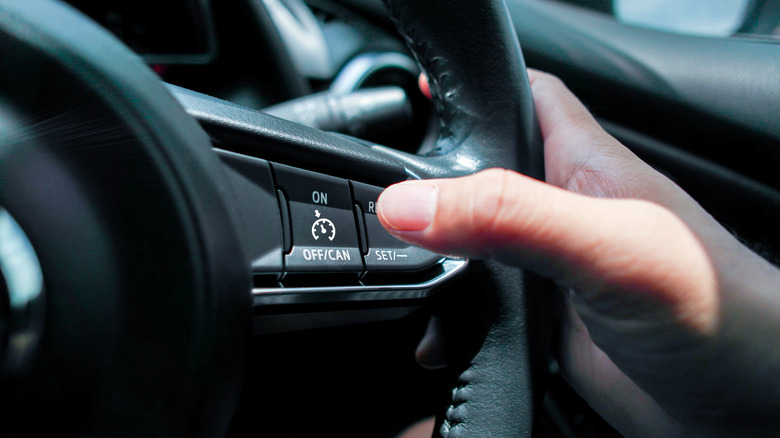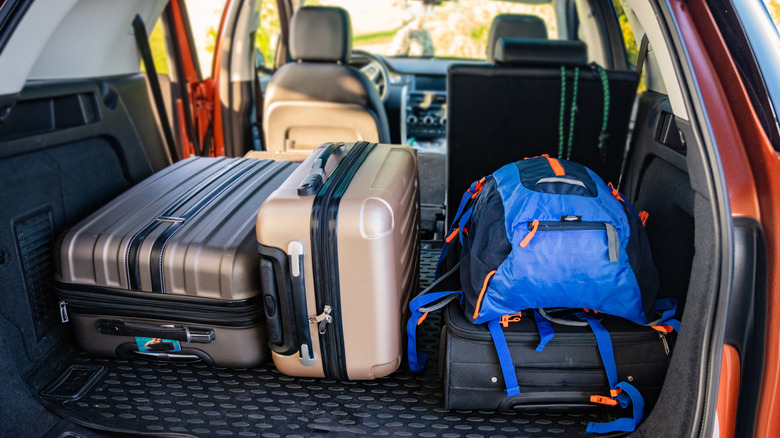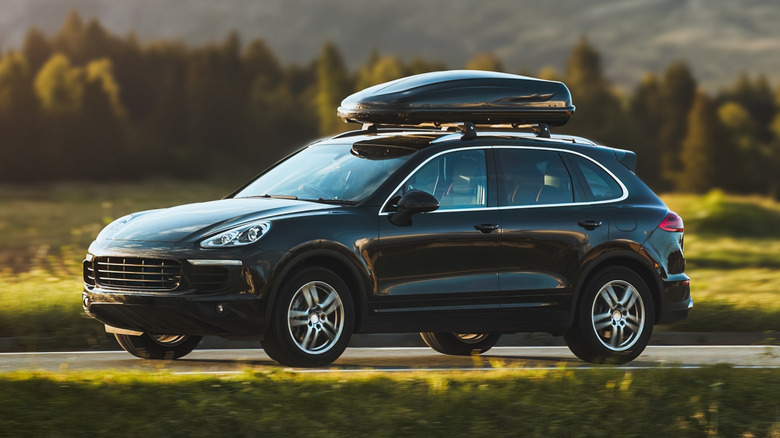10 Ways You Can Avoid Wasting Fuel In Your Car
Average gas prices have dropped slightly in recent years after a peak in 2022, but they're still significantly higher than they were a decade ago. With living costs rising in a variety of ways in recent months, cutting down on your fuel bill is an important part of keeping your budget in check. If you're in the market for a new car, it's worth checking out the most-fuel efficient cars on the market, many of which can hit over 40 mpg with ease. If you're trying to make your current car a little less fuel-hungry, however, then there are still plenty of things you can do.
Some fuel-saving methods might involve making compromises, either with your driving style or your journey times. Still, others are as simple as cutting out bad habits or checking a few things on your car that shouldn't take more than a few minutes. Whether you're looking for quick and easy ways to save on gas or you're ready to adapt your driving style for bigger savings, these 10 tips should help you spend less at the fuel pump.
Don't leave the car idling for too long
Modern car engines are designed to be more resilient to sudden starts, but it's still a good idea to let your car warm up for a few seconds before driving off if you want to keep it running smoothly. During the warmer months, letting it warm up for around 20 or 30 seconds should be more than enough time. In winter, the colder temperatures mean that the engine will take slightly longer to become properly lubricated with oil, and so letting the car idle for up to a minute might be a good idea.
However, leaving your car to sit idle in your driveway for longer than that is a surefire way to waste plenty of fuel. If it's cold outside and you want to warm up the cabin, then driving it will help it warm up significantly faster than leaving it to idle. If you sit with the car idling while you're distracted — perhaps while you finish getting passengers in the car or sit scrolling on your social media app of choice — it's simply burning fuel that doesn't need to be burnt. If you're looking to save on gas, cutting your car's idle time to a minimum is one of the easiest ways to do it.
Try to minimise start-stop driving
One fuel-saving strategy that might take some practice is minimizing start-stop driving. Anticipating the road ahead gives you more room to accelerate and decelerate gradually, and it can make a big difference to your car's fuel consumption. Repeatedly accelerating and then braking takes more fuel, so if you see traffic ahead or you're approaching a stop light, try to glide towards it at a steady speed where possible. If you do have to stop, be gentle on the gas pedal when you take off again.
Driving in heavy traffic can make this particularly tricky, but if you're stuck in a jam, accelerating slowly when traffic moves is still the best way to minimize your fuel usage. If you're queuing downhill, it might also be possible to let the car roll when traffic moves rather than using the gas pedal. In general, being aware of how much you use the accelerator and minimizing rapid acceleration wherever possible will always be beneficial for saving fuel.
Make sure your tires are properly inflated
Plenty of drivers rarely ever check their tires unless they notice something wrong, but keeping them properly inflated can make a big difference to your car's fuel consumption. Leaving your tires underinflated can increase fuel consumption by a significant amount, while overinflating them can reduce their amount of grip, leading to longer braking distances and giving them a higher chance of spinning. Data collected by tire maker Michelin in the U.K. found that 60% of drivers drove with underinflated tires, and so if you haven't checked your tire pressures recently, there's a good chance your car might have underinflated tires too.
If you don't know what your vehicle's tire pressure should be, it's easy to find out. Many modern cars will have a sticker on the inside of the driver's door that lists the recommended tire pressure, and it will also be listed in your owner's manual. Pressure recommendations often vary based on how many people are in the car and how much cargo you're carrying, so if you regularly drive with a fully loaded car, be sure to adjust your tire pressure accordingly.
Don't use the A/C if you don't have to
While drivers in the warmest parts of the country might need to keep their A/C on most of the time, if you live somewhere with a more temperate climate then it's worth being picky with when you use it. The most fuel-efficient way of driving is to keep the windows up and the A/C off, but that's not practical if it's hot outside. There's no one-size-fits-all way to work out whether it's more efficient to keep the windows down or the A/C on, but in general, the lower the speed you're driving, the better it is to keep the windows open.
If you're driving at low speeds in the city, keeping a window down to stay cool can be beneficial, as it won't cause much additional drag. When you're driving at higher speeds — particularly if you're on the highway — having a window open can lead to significantly more drag, which can increase your car's fuel consumption more than having the A/C on. As such, it's usually best to keep the windows closed and the A/C on while you're racking up highway miles.
Keep up with your car's maintenance
If you skimp on maintenance, your car will almost inevitably end up less reliable over time. A poorly maintained engine without the correct fluids won't be as efficient as an engine in top condition, even if you try to drive frugally in other ways. Plus, it increases the chance that a component will prematurely wear out, which can lead to big repair bills. That will not only wipe out any savings you made by cutting corners on maintenance, but can potentially leave your car out of action to boot.
As well as ensuring that your engine is correctly maintained and topped up with fluids, it can also pay to be picky about the type of engine oil you use. Using a lower viscosity oil can help decrease fuel consumption, but you'll need to make sure that you pick an oil grade that's recommended by your car's manufacturer. It's worth spending some time getting to know the different oil classifications so you can pick the best one for your particular car and driving needs, and hopefully increase your fuel economy slightly in the process.
Drive in a higher gear if you have a manual transmission
Manual transmission cars only make up a tiny proportion of sales in America, with CarMax reporting that over 97% of its customers drive an automatic. Still, if you're one of the small minority of drivers who does drive a manual, it's worth watching where you shift if you're looking to save fuel. Part of the fun of driving a manual is being able to pick your own shift points, and pushing the engine up to the higher parts of its rev range whenever you want to.
However, driving fun and efficiency don't usually go hand-in-hand. The most fuel-efficient way to drive is to shift gears at lower revs, and use the highest gear you can when you're cruising on the highway at a steady speed. You might still need to drop down a gear to overtake if a gap is small, but where possible, try to stick in your cruising gear while overtaking if you have the room to do so.
Set your cruise control to a lower speed on long trips
No one likes to feel like their journey is taking them longer than necessary, but cruising at a slower speed on long journeys can make a big difference to gas consumption. One government study in the U.K. reported that dropping your cruising speed from 70 mph to 50 mph could cut fuel usage by up to 25%. That kind of drop in speed is a significant one, and it's not necessarily practical to do, particularly if you're on a high speed freeway. However, dropping your cruising speed by even just a few mph can potentially save on gas.
It might feel like you're going much slower than usual, but a small drop in speed won't make as much difference to your journey time as you might think. A 200 mile trip at a constant speed of 70 mph will take two hours and 51 minutes, while at a constant speed of 65 mph it will take three hours and four minutes. You probably won't notice the extra 13 minutes you spend in the car, but you might notice the lower fuel bill when you head to the gas station.
Don't turn off your automatic start-stop system
Depending on the make and model of car you drive, its auto start-stop system can be very annoying. Cars with laggy start-stop systems can leave you dawdling at stop lights, while overly sensitive systems can turn the car off even if you only stop at a junction for a second or two. If you're particularly unlucky, you'll have experienced both. However, those auto start-stop systems are there for a reason, and that reason is to cut your car's fuel usage.
The exact amount of fuel savings will vary between cars and driving situations, but leaving the system on can reportedly use up to 3-8% less gas. That can cut down your fuel bill significantly, and it will also reduce the amount of emissions your car releases into the surrounding environment. So, as much as it might become grating at times, it's best to leave the auto start-stop system on wherever possible.
Don't carry unnecessary items in your car
One of the easiest ways to reduce your fuel bill is to regularly clear out your car so that you're not carrying around heavy items when you don't need to be. Having too many unnecessary items in your car will make its engine work harder, since there's more load to carry around. The odd soda bottle or misplaced screwdriver won't make any difference, but if you're the kind of person that's liable to leave their heavy camping or fishing gear in their car after a weekend trip, there are potentially big fuel savings to be made.
Having children to ferry around can also result in a jumble of toys, spare clothes, and supplies building up in the trunk. So, when you have the opportunity, it's worth sorting through everything to see how much you really need to bring with you on daily trips. It might only end up making a small difference to your car's fuel consumption, but then again, you might also end up being surprised about the amount of unnecessary things you end up carrying around.
Take off your roof rack when you're not using it
If you have more things to carry around than your trunk and cabin can handle, then you might have added a roof rack to your car. They're a great way to bring along extra gear on road trips, but they also increase a car's drag. Taking your roof rack off when you're not using it will decrease that drag, and potentially result in additional fuel savings. Leaving bike racks and other attachments on your car when they're not needed can also produce a similar effect.
A roof rack can reportedly reduce aerodynamic efficiency by up to 20% at highway speeds, and so you can potentially make a noticeable difference to your fuel bills just by taking it off when it isn't needed. If you do that and also follow as many of the other steps here as possible, you'll make a big difference to your car's fuel efficiency — potentially saving yourself a lot of money as a result.
